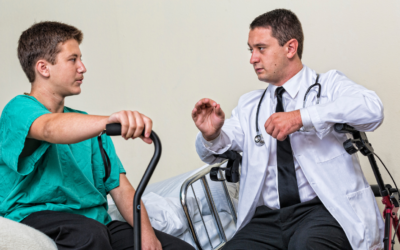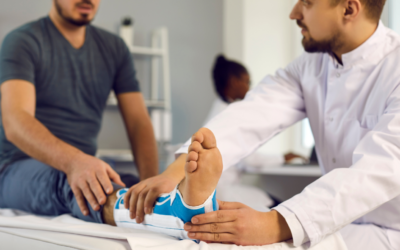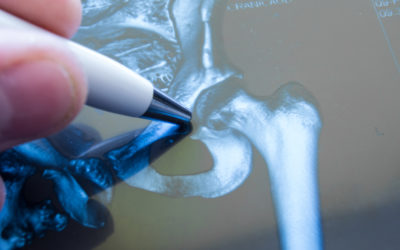Summer is here, you know what that means; good weather and outdoor fun! The more active one becomes, the higher risk of injury. From sports injuries to overuse from yard work, here are some of the most common orthopedic injuries we encounter over the summer months, and some tips on how you can avoid them.
Summertime injuries can occur at any time during activities or just daily tasks including many parts of the body such as:
- Shoulder
- Knee
- Hip
- Elbow
- Ankle
Shoulder
Although shoulder injuries can occur all year round, they seem to peak in the summertime. Many people can get injured in their shoulder whether they play sports or just clean up the yard, shoulder injuries seem to be the biggest culprit when it comes to orthopedic visits.
Many different activities can affect the shoulder joint during the summer including but not limited to:
- Volleyball – The repeated arm motions while overhand serving and spiking a volleyball can result in rotator cuff tears if done too often or incorrectly
- Swimming – Repeated overhead motion in swimming strokes can cause painful inflammation in the muscles of the shoulder
- Yard work – Raking is a repeated motion when out doing yard work; this can create inflammation and irritation in the shoulder
- Baseball or softball – The constant throwing motion, especially at excessive speeds, can cause inflammation, or even tears if done incorrectly
Rotator cuff tears, strains, and other pain can occur for many different reasons and may eventually lead to shoulder arthritis over time. Arthritis may become irritated, simply from using the joint in repetitive motions, such as in the activities listed above.
Knee
Many knee injuries in the summer occur while playing sports, starting new outdoor workouts, or just from the increase in activity. The knee is one of the most complex joints in the body, made up of bones, cartilage, muscles, ligaments, and tendons; with so many different components working together, like a machine, a small injury to one part of the knee can lead to some major issues and complications.
There are four main knee injuries one can endure including:
- ACL Tear – The ACL is one of the four ligaments in the knee that provides stabilization to the joint
- Patellar Tendonitis – Also known as jumper’s knee, this condition is characterized as the inflammation of the patellar tendon, which connects the knee cap to the shin bone
- MCL Injury – An MCL injury occurs when the ligament that runs on the inside of the knee is strained from an outside impact. This ligament provides side-to-side support to the joint
- Meniscus Tear – The meniscus is tough, rubbery cartilage that acts as a shock absorber between the shin bone and thighbone
Sports, such as soccer, baseball, and football, tend to be some of the biggest sports contributors to knee injuries; whereas cardio activities like biking, running, and skateboarding can have long-term negative effects on the knees as well. Repetitive use and movements can lead to pulled muscles and overall fatigue, leaving the knees vulnerable to injury.
Hip
One of the biggest contributors to hip injuries in the summer is swimming. This activity tends to create overuse issues, which can cause labral tears in the hips from repetitive use.
Most of the injuries in swimming are related to poor form when doing certain strokes in the pool. For example, if a swimmer has poor form at the breaststroke, he or she may end up with bursitis or tendonitis in the hip joint, which causes pain. Pain for swimmers tends to lead to a reduced ability for the swimmer to fully extend their hip during this activity; creating more vulnerability to more serious problems.
Elbow
There are many different activities people may participate in when it comes to summertime. Those which may affect the elbow include but are not limited to:
- Golfing
- Baseball
- Softball
- Tennis
- Yard work
There are many different injuries one may encounter in the many activities listed above and more. Elbow fractures and dislocations are common in the summertime due to falls, accidents, and other mishaps. However, the elbow may see some overuse injuries including tennis elbow, pitcher’s elbow, and golfer’s elbow. Although the names of these injuries appear to be sports-related, people can develop these issues without playing sports.
- Tennis Elbow – The most common racquet-related injury that occurs when the tendons that attach muscle to bone deteriorate
- Pitcher’s Elbow – The result of the excessive throwing motion
- Golfer’s Elbow – The degeneration of the tendons that attach to the inner elbow
Ankle
With all the increased movement your ankles may pay the price. An ankle sprain is one of the most common ankle injuries, which includes any stretching or tearing of the joint. Symptoms of an ankle sprain are swelling, instability, bruising, and pain. These injuries can happen playing sports, tripping over something at home, walking on an uneven sidewalk, or anything that may cause your ankle to roll.
Ankles tend to be prone to overuse injuries such as stress fractures. Many athletes may encounter these, where they develop over time and become a serious issue if left untreated.
Prevention
Summertime is the time to enjoy the great outdoors, and not be stuck inside due to injury. You must take care of your body and do your best to prevent injuries. Below are some suggestions to help keep your summer fun:
- Warm Up – Loosening up the muscles in your body before and after any type of exercise will make all the difference. You are far less likely to tear or strain a muscle when the muscles are prepped for the activity and warmed up for movement.
- Proper Form – Form is one of the most important things when it comes to any sort of physical activity. It may be helpful to hire a trainer or coach if you feel you need form help.
- RICE Therapy – If you feel pain or discomfort in any area, stop the activity and practice this therapy; Rest, Ice, Compression, and Elevation. Resting gives the body time to heal, ice and compression will help reduce swelling and tension, and elevation will help with swelling, pain, and throbbing.
- Over-the-Counter Medications – Anti-inflammatory medications, such as ibuprofen can help reduce swelling and pain along with RICE therapy




